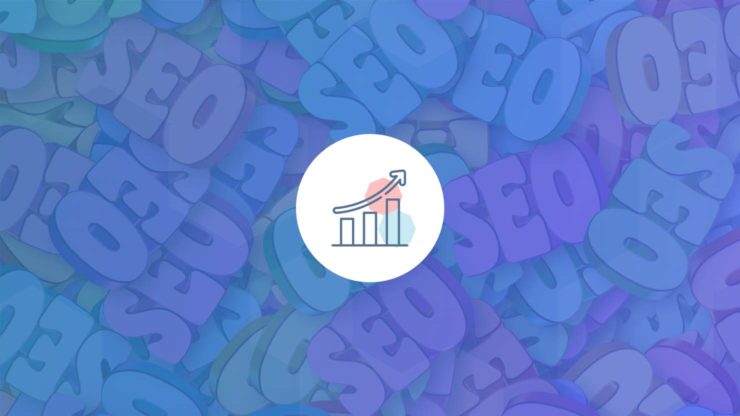Did you know by the time you finish reading this sentence, over 200,000 new Google Searches will have occurred. If you want your website to capture billions of online searches each day, you need to understand what is SEO and how to best apply SEO to your business.
In a world where information is available through a few keyboard presses, having a website is necessary for any business to thrive.
81% of consumers discover new products and services with search engines. Chances are, your target audience is searching for your products and services online.
Since the early 1990’s, website owners have realized the benefit of ranking in search engines. These SEO pioneers figured out that: increased search engine rankings equals more website traffic, which equals more sales.
This is what lead to the rise of SEO.
Table of contents
- What is SEO?
- What is a web search engine?
- What does organic search mean?
- What does non-organic search mean?
- How do search engines work?
- How does Google Search work?
- What factors influence search engine rankings
- Types of SEO
- Technicalities of SEO
- Is SEO still relevant?
What is SEO?
Search Engine Optimisation (SEO), is about making direct or indirect changes to your website with the aim of improving search engine rankings.
These changes might seem piecemeal, but when combined with other optimisation, they can lead to a noticeable impact on your site’s ability to rank in the search results.
SEO relies on common sense and knowing which tactic is right for your business.
That’s because the techniques and topics of what is SEO are essential ingredients in what makes up any web page on the internet. SEO is about getting the most out of these elements with the end result of improving your website’s search engine rankings.
SEO is most commonly associated with Google SEO but there are more search engines than just Google such as Yahoo and Bing.
What is a web search engine?
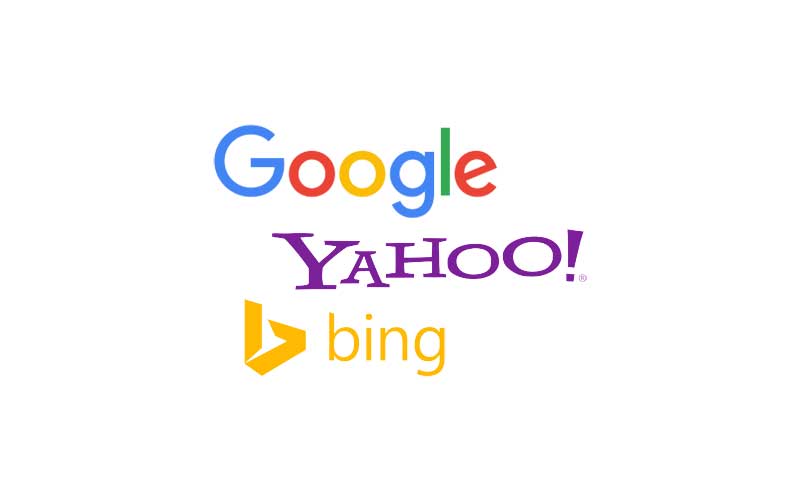
A web search engine is a system that is designed to find information on the internet-based on user-inputted keywords.
When you search for a keyword such as “SEO Brisbane“, search results are displayed relating to your search. Its Googles goal to show you the page that is the most relevant to your search query.
Search Engines generally display a list of results referred to as search engine result pages (SERPs). These SERPs can contain a mixture of website pages, images, video, PDFs and other types of files.
Unlike web directories which are manually maintained by human editors, search engines maintain real-time information through the use of automated algorithms.
According to Net Market Share (as of April 2017) the global marketing share percentage, in terms of the use of Search Engines heavily favors Google, with over 77%.
Google is the undisputed market leader of search engines around the world. Considering this, the SEO strategies and techniques outlined in this blog post will be for Google. However, other search engine providers like Yahoo, Bing and Baidu etc still hold a large audience in many countries.
What does organic search mean?
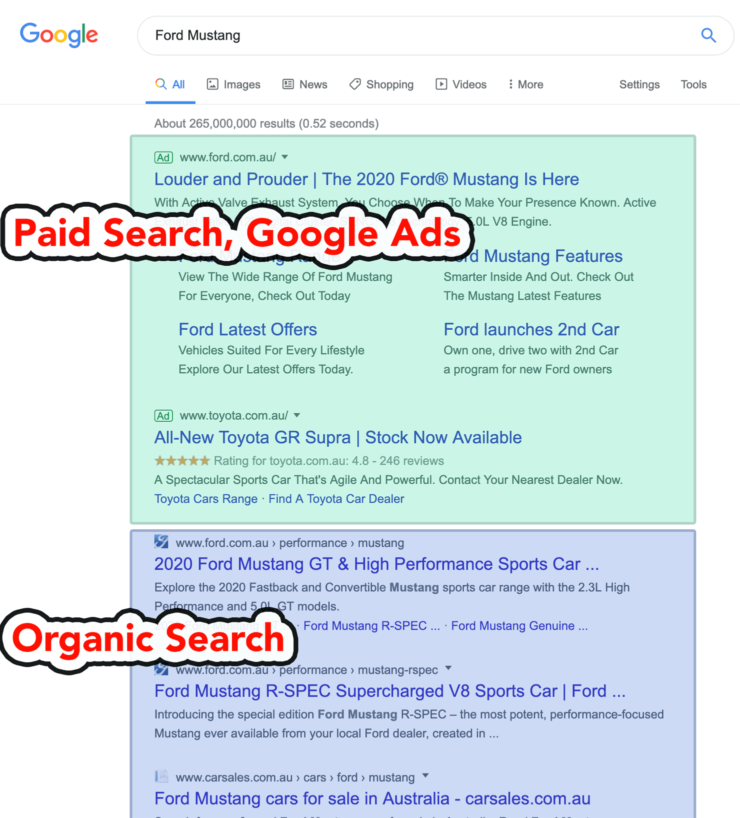
Organic search means the search results that are not paid ad placement. SEO is almost always referring to how to improve your organic search results. Google has stated that organic search results receive more clicks than non-organic search results.
What does non-organic search mean?
Non-organic search represents search results that are paid ads. These ads are delivered through the Google Ads network. Non-organic search results are easy to spot – look for the green ‘Ad’ text held within a green border on the search result.
How do search engines work?
Web search engines have two major objectives:
- Crawling and building a searchable index of content.
- Providing search engine users with SERPs of websites most relevant to the search criteria.
Picture the World Wide Web as a network of traffic lights in a big city road network. Each traffic light is a unique piece of content such as a web page, video or image file. A search engine’s job is to index the entire city and detect all the traffic lights within the city, so they use the best road available – links.
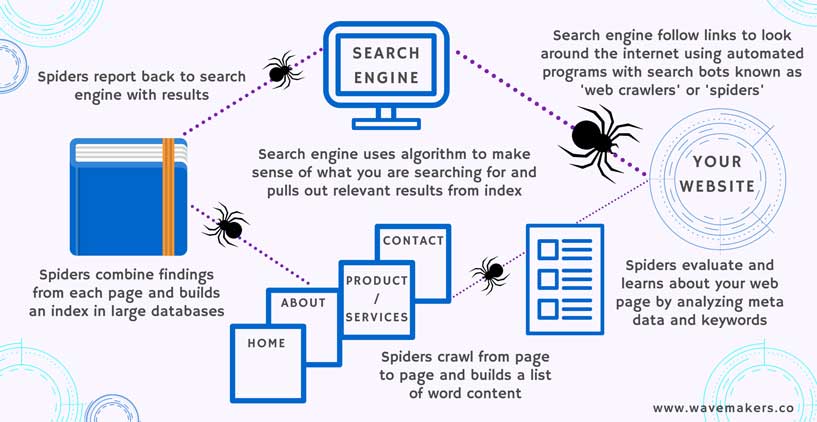
Links are the building blocks of the web and serve to connect all web pages together.
Search engine’s automated algorithms and robots use links to reach the many billions of files, pages and documents published on the web.
Search engines are designed to be almost instant answer machines.
When a user performs a web search, the search engine sifts through the billions of indexed content pieces and performs two actions:
- Returns a list of results that are relevant to the user’s search keywords.
- Ranks those results according to the authority of the website serving the information.
It is both relevance and authority that SEO is meant to influence.
How does Google Search work?
Considering Google is the most popular search engine in the world, it is important for SEO to know how it works.
Google search can be divided into three major components:
- Crawling and indexing.
- Google’s search algorithm.
- Useful responses and answers.
Like most search engines, Google uses web crawlers to detect new web pages and links from those web pages. Google’s web crawlers go from link to link and index data about those web pages on Google’s servers. Google also uses sitemaps that you can provide it to index web content.
Google’s search algorithm is the company’s most valuable asset, and one of its most guarded secrets. Google’s search algorithm analysis what you are looking for and figures out what information to return to you. The Google search algorithm evolves and improves to deliver the best search experience possible.
The most noticeable improvements to Google Search is its ability to provide you with useful answers. A weather themed search will most likely show your local weather forecast on the search results page, not links to weather sites.
Google can leverage its other market leading properties, such as Google Maps and Youtube, in its search results. This gives Google search a richer user-experience compared to other search engines.
What factors influence search engine rankings?
SEMrush did its own Ranking Factors study based on the largest scope of 600,000+ keywords from various local databases.
Their main goal was to identify any consistent patterns in the ranking mechanism. 12 major website factors have been analyzed to understand what impacts search results. The results are below:
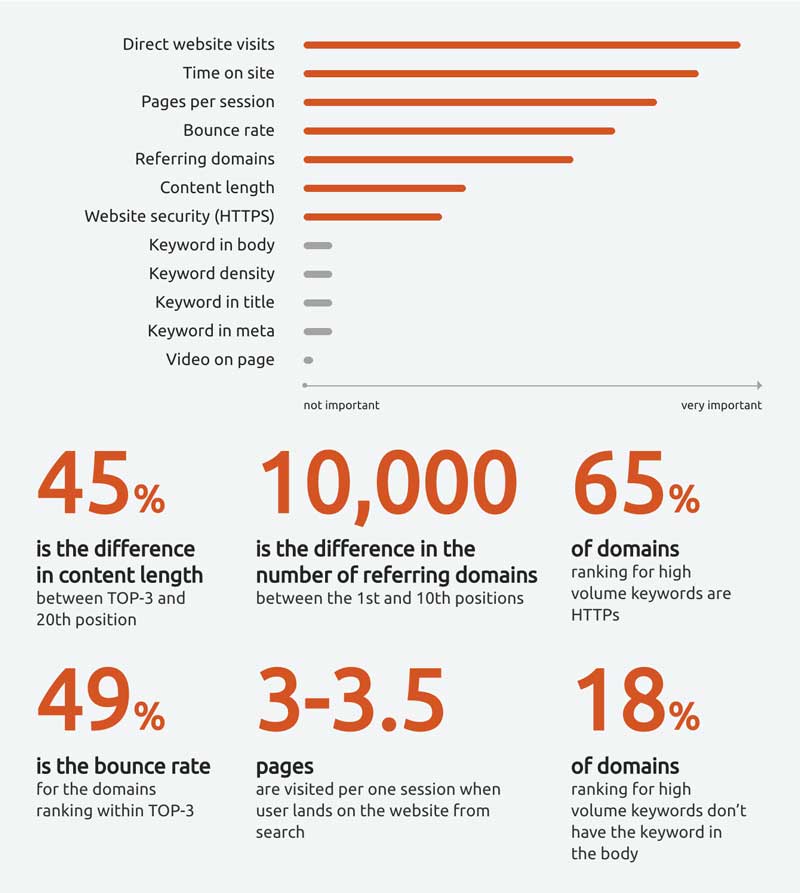
Core Factors
Search Engine Land worked with Common Craft to produce the video above that explains, in the simplest terms, what SEO is.
- Usability matters – A search engine’s goal is to provide you with a great search engine experience. If you go to a website with broken links, spammy pop ups and slow load times, you are going to have a poor user experience. That’s why it is important to have a great website user experience if you want your website to rank.
- Words matter – You have to ensure your content contains keywords that are relevant to your content and to what your audience is searching for.
- Titles matter – Since each page of your website has an official title, make sure your page titles summarize the contents of the page.
- Links matter – A website that has a lot of links coming to it can make it look good to search engines. Since sites who buy false links abuse this, only links coming from trustworthy sites add value.
- Words in links – Another important thing about links that search engines look for are the words used in the links. You have to make sure that the words you use to link to a site are relevant to that site. This is especially if you’re linking to one of the pages in your website or one of your blog posts.
- Credibility matters – Google can promote high-quality websites in its search results and it can penalize poor quality ones. Domains and domain owners that have been penalized by dodgy SEO techniques will find it very difficult to rank well in the search results.
- Reputation matters – Reputation is important. Sites that have a consistent record of fresh engaging content and growing numbers of fresh quality links rank well in search engines.
Search engines refine and change their algorithms from time to time. In fact, there were roughly 1600 improvements to Google Search in 2016 alone. But these major factors remain the same.
For more information on Google’s ranking factors, check out Backlinko’s list of over 200.
Types of SEO
SEO can be split up into three distinctive types: white hat, black hat, and gray hat SEO. It is important to be aware of these different types of SEO to know what to do and what not to do when it comes to improving your search engine rankings.
White hat SEO

White hat SEO refers to the usage of optimisation strategies, techniques and tactics that closely adhere to publicly available search engine rules and policies.
Some examples of White Hat SEO techniques include using keywords and keyword analysis, backlinking, link building to improve link popularity, and writing content for human readers.
White Hat SEO is mostly used by those who intend to make a long-term investment on their website. Also called ethical SEO.
Black hat SEO

Black hat SEO refers to the use of aggressive SEO strategies, techniques and tactics that focus only on search engines and not a human audience. These tactics usually do not obey search engines guidelines.
Some examples of black hat SEO techniques include keyword stuffing, invisible text, doorway pages, adding unrelated keywords to the page content or replacing the web page entirely after it has been ranked by search engines (page swapping).
Black hat SEO is more frequently used by those looking for a quick financial return rather than a long-term investment on their website.
Black hat SEO can result in your website being banned from search engines. But those who use these tactics wouldn’t mind since their focus is usually on quick high return business models.

Gray hat SEO
Gray hat SEO uses tactics and techniques that are not well-defined by Google. These tactics sit in the ‘gray’ area of what is SEO. It is unknown whether these gray hat tatics affect search engine results in a positive or negative way.
Gray hat tactics aims to push the SEO envelop as far as possible without being banned from the search engines. Gray hat strategies can be volatile as Google can classify the gray hat technique as being either white or black hat.
The safest route a business owner can take is sticking with proven white hat SEO strategies. Only experienced and reputable SEO specialists should be trusted with gray hat strategies. Blackhat SEO should be completed avoided.
Technicalities of SEO
When it comes to the technicalities of SEO, the field is split into two categories: on-site and off-site SEO. Knowing the technicalities of each category will help you make better decisions on how to improve your website’s search engine rankings.

What is SEO – On-site
‘On-page’ or ‘on-site’ SEO is the practice of optimizing individual webpages to rank higher and earn more relevant traffic in search engines. On-site refers to both optimizing the content and source code of a page, as opposed to off-site SEO which refers to links and other external signals. On-site SEO has changed over the years, so it’s important to keep up with the latest practices.
There are 3 big categories in on-site SEO, that you’ll need to take a look at. The first and most important is content.
1. Content
You’ve probably heard it before: “Content is king.” It was predicted by no less than Bill Gates in 1996 and it’s as true as ever today.
A Google search engine customer is happy when he finds the result that serves his needs in the best way.
You can always rely on Google to give you the best possible experience by directing you to the greatest content it can find.
This means that your primary job is to produce great content if you want to do well with SEO.
What are the qualities of a great content?
Make sure you include all the important ingredients of great content in your blog post.
- Post Long Content – The SEO adage “length is strength” was supported by an industry study which found that longer content tends to rank higher on Google’s first page. So, you should aim for at least 1900 words for every piece of content that you publish.
- Boost Dwell Time – If someone hits their back button immediately after landing on a page, it signals Google that this is a low-quality page. That’s why Google uses “dwell time” to size up your content’s quality. Increase your average dwell time by writing long, engaging content that keeps people reading.
- Engagement – Include engaging images, videos and diagrams to help reduce bounce rate and increase “dwell time” on-site.
- Answer questions – Sounds obvious, but many businesses get this wrong. Focus on answering the questions that your audience is searching for, and not only talk about yourself.
- Focus on readability – Google appears to prefer numbered lists or bulleted step-by-step instructions that clearly answer questions.
How often should you post new content?
Hubspot analyzed blogging data from their 13,550+ customers. They found out that blogging more often improves Google rankings, inbound traffic and lead generation.
Another way to improve your Google “freshness” is to make your already published content up-to-date. You can achieve this by rewriting them or adding new information whenever you find one.
While it is important to publish regularly, you can still get great results with posting once a month, as long as your content is thorough and in-depth.
When creating content it is important to write simple, subject-focused sentences are easy to understand.
Make it a point write to sentences that Subject Predicate Object (SPO) structure. This will not only make the content easier for your users to digest, search engines will have no problem parsing the information as well.
The key here is to sound natural and unforced. Always construct your sentences with purpose, writing content that directly answers a question.
Keyword Research

Perform keyword research to determine the opportunity for queries that start with “how to,” “why,” and “what is” questions. If you’ve never done keyword research before, you might want to take a look at our introduction to keyword research post.
Out of all on-site SEO factors, keyword research is the one you should spend the most time learning. There are a lot of information you can find online and Backlinko’s definitive guide to keyword research will do.
While you should use your keyword throughout your content, keyword stuffing will likely hurt your rankings.
Keyword stuffing is an absolute no-go these days.
Another thing, make sure your keyword appears in the first 100-150 words of your content.
As long as your keyword is present in these important places – headlines, URL and meta description – there is no need overuse the keyword in your body text.
Speaking of URL, avoid ugly and long URLs and make sure to include your keyword in the URL. Remove so-called stop words – words like “a”, “and”, “the” etc.
As of version 1.1.6, the Yoast SEO plugin will remove stop words from your slugs once you save a post. This means you won’t get those ugly long URL’s when you do a sentence style post title.
Google derives meaning from user searches through “semantic search.” Alexis Sanders very eloquently explained it on the Moz Blog,
“The word “semantic” refers to the meaning or essence of something. Applied to search, “semantics” essentially relates to the study of words and their logic. Semantic search seeks to improve search accuracy by understanding a searcher’s intent through contextual meaning. Through concept matching, synonyms, and natural language algorithms, semantic search provides more interactive search results through transforming structured and unstructured data into an intuitive and responsive database. Semantic search brings about an enhanced understanding of searcher intent, the ability to extract answers, and delivers more personalized results.”
2. HTML
To do thorough on-site SEO, knowing the basics of HTML will be of massive help.
Thanks to websites like Codecademy or Khan Academy, you can learn everything about HTML for free. You can even learn it on the job by using a simple cheat sheet, like this one.
Why do you need to know HTML?
There are 3 parts of HTML that you need to optimise for each single post before you publish it.
Title Tags
The title is one of the single most important factors if you want to rank well in search results. Not only is it the literal title of the tab or browser window, it’s also the first line people see in the search results, followed by the URL and the snippet, usually the meta description combined with a date as seen below:

On many blogs, the title for blog posts contains this sequence: “Blog title » Blog Archive » Keyword rich post title” or “Blog title » Keyword rich post title”. For your website to get the traffic it deserves, this should be the other way around, for two reasons:
- Search engines put more weight on the early words, meaning your keywords should be near the start of the page title for you to rank well.
- Since people scanning result pages see the early words first, your keywords should be at the start of your listing. This is likely to increase the chance of your pages being clicked on.
Moreover, adding modifiers like “2017”, best”, “guide”, “top” and “review” will help you rank for long tail versions of your keyword.
Although most themes for WordPress get this right, make sure your post/page title is a H1 and nothing else.
Subheadings
Include your target keyword in at least one subheading, and wrap it in an H2 tag. Doing this not only helps format and structure your content better and give your readers easy reference points, but they also affect SEO.
Meta description
Meta descriptions are the 160 characters of text that shows up as an excerpt when Google displays your page as a result to searchers.
Optimised meta descriptions that are within the 160 character limit will never be cut off and end with “…” or seem like they end mid-sentence. They also often mention their keyword upfront. This not only helps improve the search position ranking, it can also lead to a better click through rate.
3. Architecture
While this part will be a bit technical for some, there are a few simple things everyone can and should take care of, to improve SEO rankings. Good website architecture leads to a great experience for the user. These factors can include fast loading times, a reliable website and a mobile-responsive design.
Website speed
In 2010, Google announced that they’re including a new signal in their search ranking algorithms: site speed. Site speed reflects how fast a website responds to web requests.
You can boost your site speed by using a CDN, compressing images, and switching to faster hosting. We have written an ultimate guide to speeding up your WordPress website here.
Make sure your site doesn’t take more than 4 seconds to load: MunchWeb found that 75% of users wouldn’t re-visit a site that took longer than 4 seconds to load.
You can check your site’s loading speed using tools like Google Lighthouse.
Make sure your site is crawler-friendly
A crawlable link structure—one that lets the crawlers browse the pathways of a website—is vital to them finding all pages on a website.
You can make this job easier for Google by creating a sitemap, using a simple plugin if you’re on WordPress.
Duplicate content
Not everything on your page should be original. Re-posting your content on other websites or publishing your guest posts again on your own site, doesn’t hurt your SEO, but you have to do it in a proper way.
Learn about 301 redirects, which are a great way to handle duplicate content so you do not get penalized.
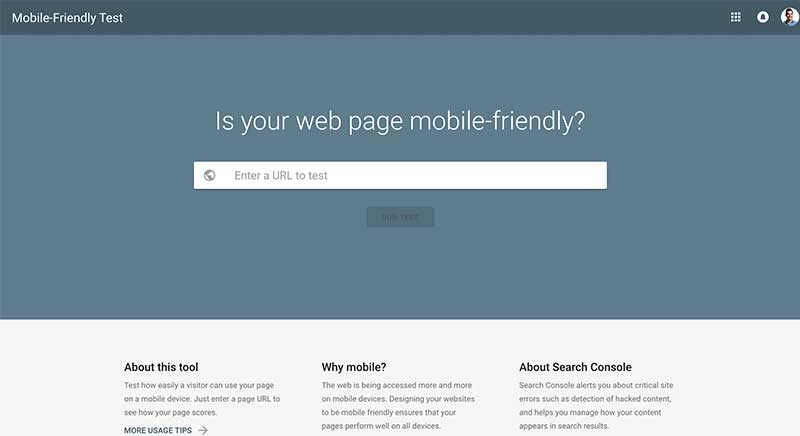
Mobile-friendly site
According to a new study in the US, mobile usage accounts for 60% of time spent on digital platforms, with the remaining 40% taking place on desktops.
This means that being mobile-friendly is now crucial to the success of your business.
Google considers how well your website functions on mobile devices as a ranking factor.
Most WordPress themes are mobile-friendly from the get go these days, and if not, you can rebuild your website in a responsive theme. You can test how mobile-friendly your website is in Google’s eyes here.
From HTTP to HTTPS
In 2014, Google announced that security is now considered a ranking signal and that they would give ranking benefit to HTTPS / SSL sites.
Because of that, more and more sites have switched over to SSL. If you want to move to SSL, here’s a useful article on the tips & tricks for moving to HTTPS .
You can save a lot of on-site SEO by using a tool such as Yoast SEO if your blog is a WordPress site. It will help you with many of the important on-site elements we just discussed.
Aside from these content, HTML and architecture, there are other more factors that make up a perfectly optimised page. Backlinko provides a checklist of practical on-site SEO strategies you can use to bring in more search engine traffic to your posts.
What is SEO – Off-site
‘Off-site’ or ‘off-page’ SEO is the act of optimising your brand’s online and offline footprint through the use of content, relationships, and links. The goal of off-site SEO is to create an optimal experience for prospects and search engine crawl bots. It typically leads to gradual increases in positive brand mentions, search rankings, traffic to your site, and conversions.
1. Trust
Trust is becoming more important for search engines. In fact, most of the recent Google updates have hit spammy and obscure websites hard.
These are the 4 parts for building trust:
- Authority
The authority of your site is determined by a combination of 2 kinds of authority you can build:- Domain authority – this has to do with how well known your domain name is.
- Page authority – this relates to how authoritative the content of a single page is.
- Bounce rate
Your site’s bounce rate is the number of people who view only one page of your site before immediately leaving. The right audience will spend more time on your site because it looks good, loads fast and has great content. Here are some tips on how to decrease your bounce rate. - Domain age
Does domain age matter? Google says it doesn’t really matter. - Identity
Improve your trust ratings for search engines by building your brand or personal identity. Here’s a guide on how to build your brand authority from Google.
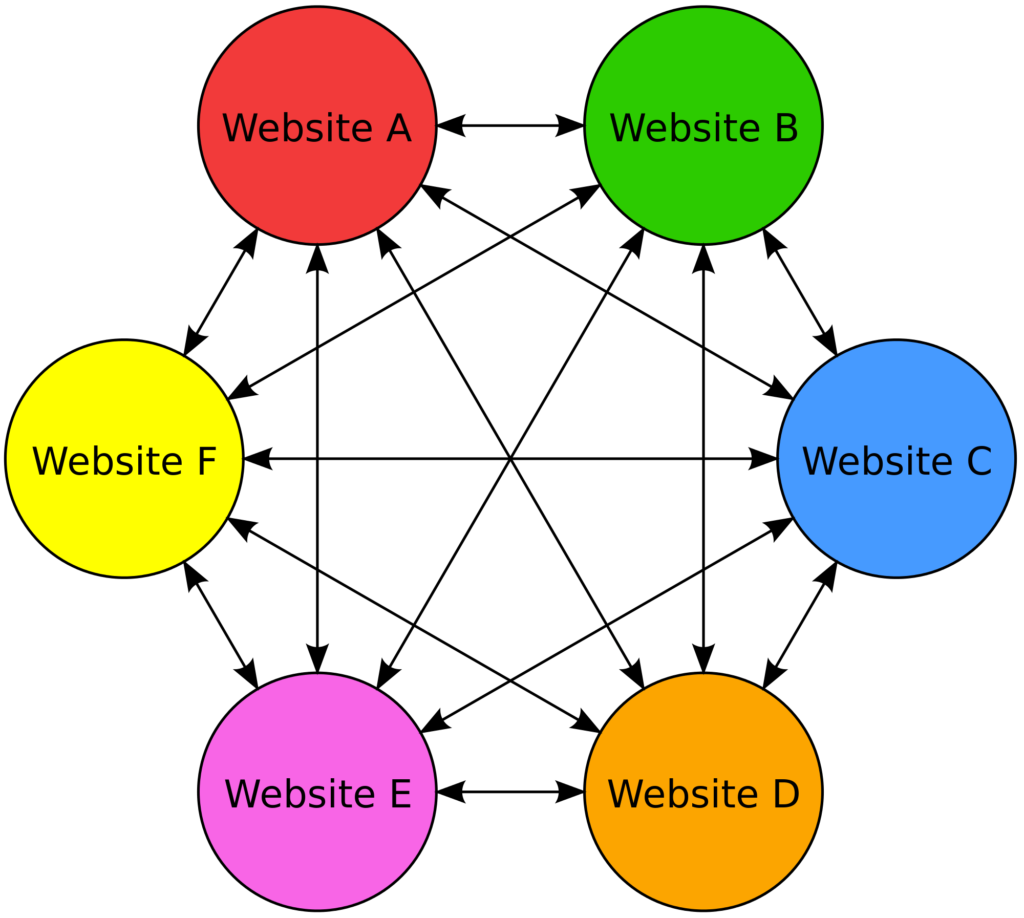
2. Links
There are plenty of ways to get backlinks but you should also take the initiative and ask for them to boost your site’s traffic.
Quality of links
When speaking of links, quality rules. The quality of your links matters much more than the number of links you have.
To build quality backlinks reach out to the right sources and offer value in exchange for a solid link. Here’s an advanced guide to link building that gives you a lot of ways on how to do it.
Anchor text
The anchor text is the text used when other sites link to you and the way you write it matters.
The more natural the link text sounds, the better.
Number of links
Although the quality of links matters more, the number of total links you have does matter as well. Over time aim to build high-quality backlinks at scale.

3. Personal
Personal factors is another category of off-site SEO that’s worth looking into. Although most of these are not within your control, still there are some things you could do to reach your target audience.
Country
When you do a search, you are shown results relevant to the country you’re in. Opening and closing times of recommended stores and restaurants are displayed in your time zone.
Remember that words are interpreted differently. So if someone searches for “pants” in the US, results will show trousers or shorts. On the other hand, someone in the UK might see underwear because that’s what the term means there.
City
The geotargeting goes even further down to city-level. When you Google ‘restaurants’, you are usually shown results from restaurants in the city that you are in at the time of searching.
A word of caution though – if you don’t want to end up being considered as a local authority only, don’t use city names in your keywords.
Socialisation
Take advantage of your social channels like a Facebook account, Google Plus profile or YouTube channel. The more people who like you, the better.
When Google recognises that you’ve liked a brand before on social networks, it’s more likely to show you results from those brands or even personal contacts you have who also did the same.
4. Social
There are 2 main factors of influence to boost your social signals:
Quality of shares & likes
Like the quality of backlinks, who shares and likes your post matter more than the quantity. Google is aware of large influencer accounts and when they share your post, it’s given more weight.
A great way to get influencers to share your content is to give them a heads up before you even publish your post, quote them or better still, interview them.
Or, find a similar article and use Keyhole to find influencers who shared it.
Number of shares & likes
The number of shares and likes is also worth looking at. Your blog post has the power to go viral if it appeals to a large number of audience and is shareable.
Going viral is a matter of consistently publishing great content and promoting it.
Is SEO still relevant?
As stated at the start of this article, there are over 40,000 searches in Google alone processed very second. Aside from very niche product or service examples, there’s a very good chance that you can use SEO to generate new sales and enquiries for your business.
The best part about SEO is that you do not have to pay money to acquire customers, unlike pay-per-click marketing. What I love about SEO is it can be a very profitable way to market your business.
Once you get the technical on-site and off-site foundations right and invest in an ongoing white-hat content strategy, you are able to gain customers for free.
The fact of the matter is: as long as people use web search engines to discover answers, SEO will always remain relevant.
What are your thoughts on what is SEO? How effective is it for your business? Leave a comment below and let’s start a conversion.

